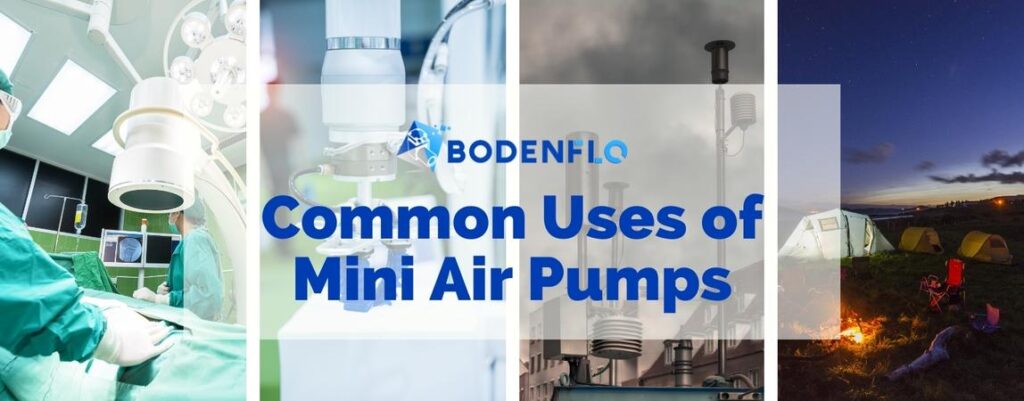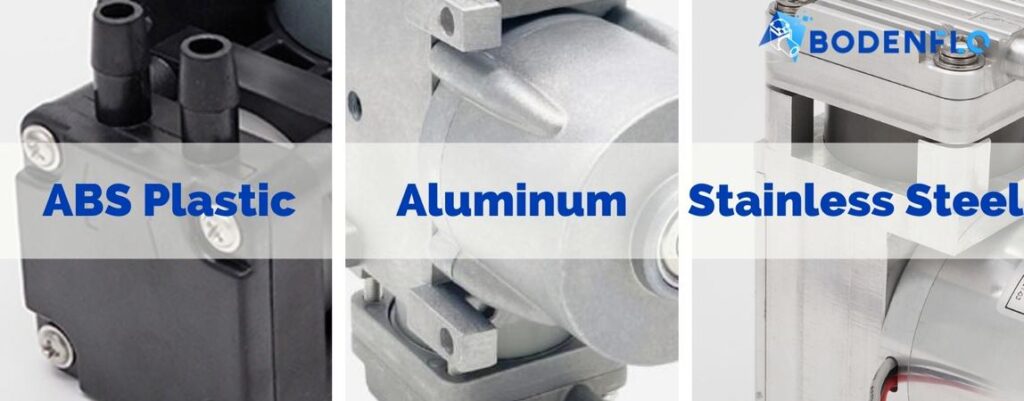
Ever found yourself grappling with the need for quick, reliable, and space-saving air pumping solutions? You're not alone. The quest for compact yet powerful air pumps is more relevant than ever.
Mini air pumps serve a multitude of applications, from inflating tires and balloons to aiding in medical treatments and automation processes. They are compact, highly efficient, and designed for both consumer and industrial needs.
Don't underestimate these small gadgets; their contribution to a wide array of industries is anything but small.
What Are the Common Uses of Mini Air Pumps?
Understanding the diverse applications of mini air pumps can help you harness their potential to the fullest. Contrary to popular belief, these versatile devices are not confined to just inflating tires or small toys. Let's delve deeper into their multifaceted utility across different industries.
Healthcare Devices
In the healthcare sector, mini air pumps have become indispensable. They are commonly used in devices such as nebulizers, which administer medication in the form of a mist. Additionally, these pumps play a critical role in Continuous Positive Airway Pressure (CPAP) machines, designed to assist individuals with sleep apnea.
Automation and Control Systems
Another field that benefits greatly from mini air pumps is automation. In automated control systems, mini air pumps can be utilized for pressure calibration, ensuring that various processes run smoothly and efficiently.

Environmental Monitoring
In the realm of environmental conservation, micro air pumps are employed in air quality monitoring devices. Their compact size and efficiency make them ideal for portable units that can be positioned in various locations to measure air pollutants.
Leisure and Outdoors
Beyond serious applications, mini air pumps find usage in leisure and outdoor activities as well. Whether it's inflating an air mattress for camping or an inflatable pool for backyard fun, the convenience they offer is unparalleled.
How Do They Work?
While operating a miniature air pump may seem simple, the engineering that goes into creating such a compact yet efficient device is indeed captivating. This section will uncover the science behind the functionality of mini air pumps and explore the essential components that contribute to their operation.
Piston or Diaphragm Mechanism
At the core of a mini air pump is either a piston or a diaphragm. The micro piston pumps, generally made of high-quality metal, moves back and forth within a cylinder. Alternatively, a flexible miniature diaphragm pump might do the job by oscillating in a controlled manner. These movements create a vacuum, allowing the pump to suck in air.
Compression and Expulsion
Once the air is drawn into the pump, the piston or diaphragm compresses it, effectively increasing its pressure. The mechanism then reverses its motion, causing the compressed air to be expelled through the outlet valve with significant force. This cycle of suction and expulsion enables the mini air pump to fulfill a variety of tasks.
Control System
Modern mini air pumps often come with advanced control systems. These systems can be programmed to adjust the speed and pressure of the pump, providing a high level of customization to meet specific application needs.
How Efficient Are Mini Air Pumps?
When it comes to miniaturized devices, there's often a misconception that smaller size translates to compromised efficiency. However, that's far from the truth in the case of mini air pumps. In this section, we will delve into the factors that contribute to their high efficiency, even within their compact form factor.
Optimized Internal Design
One of the secrets to their efficiency lies in the optimized internal mechanisms. Advanced materials and precision engineering ensure that the piston or diaphragm moves with minimal friction and maximum efficacy. This not only conserves energy but also provides high-performance metrics compared to their size.
Compact Yet Powerful
The compact dimensions of a mini air pump allow it to operate effectively in restricted spaces. This makes it highly suitable for portable applications, like medical devices, where space is at a premium but high performance is non-negotiable.
Energy Efficiency
The design often incorporates energy-saving features, reducing operational costs over time. Many modern mini air pumps are equipped with smart control systems that can adjust the operating parameters in real-time to achieve the highest efficiency possible, while still meeting the specific needs of the application.

What Materials Are Used in Their Construction?
The choice of materials in the construction of micro air pumps is not arbitrary. In fact, material selection is a calculated decision that balances durability, weight, and cost, and can profoundly influence the pump's performance and application suitability. Below we discuss the variety of materials commonly used and their specific advantages.
ABS Plastic: The Lightweight Option
Acrylonitrile Butadiene Styrene (ABS) plastic is a popular choice for its balance of strength and light weight. ABS is particularly useful for applications requiring portability and less rugged operational conditions, as it is relatively inexpensive to produce.
Aluminum: The Middle-Ground
Aluminum provides a middle-ground solution offering a balance between weight and durability. It’s often used in applications requiring a bit more strength, and where some exposure to harsh conditions can be expected.
Stainless Steel: For Specialized Applications
For environments requiring maximum durability, such as industrial or harsh chemical settings, stainless steel is often the go-to material. While heavier and generally more expensive, stainless steel offers superior resistance to corrosion and wear, making it suitable for long-term, demanding applications.
Thus, material selection in mini air pumps is a key determinant not only for the unit's longevity but also for its suitability for specific applications. The choice often involves trade-offs, but with the right material, you can optimize performance while minimizing costs.
How to Choose the Right Mini Air Pump?
Selecting the appropriate mini air pump is an exercise in precision engineering and application-specific customization. It's not just about picking the first option you come across; it requires thoughtful consideration of several parameters. Here, we break down the key factors you should evaluate to make an informed decision.
Flow Rate: The Backbone of Performance
The flow rate, typically measured in liters per minute (L/min), is crucial for determining how quickly the pump can move air. Your specific application may require a higher or lower flow rate, so understanding this metric is paramount.
Pressure Considerations: Understanding Capability
The pressure, usually measured in Pascals (Pa) or pounds per square inch (PSI), gives you an idea of how forcefully the pump can push air. For some applications like inflating a tire, high pressure might be necessary, while others like air sampling may require less.
Power Source: Flexibility and Mobility
Depending on your application, the power source may range from battery-operated to 12V DC or even mains electricity. Ensure the chosen power source aligns with your application's mobility needs.
Application-Specific Needs: The Final Verdict
Finally, understanding the specific requirements of your application is key. Is the pump going to be used in a medical device, an automotive application, or some other scenario? The use-case will help dictate the appropriate specs for flow rate, pressure, and power source.
What Are the Limitations?
It's essential to approach the capabilities of mini air pumps with a nuanced understanding. While these devices offer a plethora of advantages, they are not exempt from certain limitations. Here, we dissect some of the potential issues that could impact the performance and longevity of your mini air pump.
Misuse: A Direct Path to Failure
Improper usage of the mini air pump can lead to rapid wear and tear. Operating the pump outside its specified range for pressure or flow can result in reduced performance and ultimately, device failure. It's crucial to read the manufacturer's guidelines to avoid this pitfall.
Overexertion: The Silent Killer
Continuous operation beyond the pump's rated duty cycle can cause overheating and degrade internal components. It's important to adhere to the pump's duty cycle as specified in the user manual to ensure optimal performance and prolong lifespan.
Maintenance Negligence: The Forgotten Factor
Ignoring routine maintenance such as cleaning filters and checking for wear and tear can compromise your pump's effectiveness. Regular maintenance ensures the device operates at peak performance and can prevent premature failure.

Conclusion
Mini air pumps are a powerhouse of efficiency and versatility, serving a range of applications from healthcare to leisure. Understanding their functionality can help you make a more informed choice for your specific needs.
If you're looking for high-quality, customizable mini air pumps, your search ends here. Visit BODENFLO's product page to find the perfect solution for your project.


